Claudia and I have been spending a lot of time in the Pacific Northwest this year, which is great, as I love this part of the world. We just finished a workshop along the Oregon Coast, and now we’re making our way to Bellingham, Washington, to visit our son and daughter-in-law, and stopping to see friends along the way.
The workshop was a lot of fun. A great group of people, and we saw some beautiful light, as well as big waves crashing against the shore.
I made the photo above on the first evening of our workshop. The light was amazing, with warm, late-day sunlight cutting through the low-level mist along the shore. We saw some fairly big wave splashes at times, but I decided to use a slow shutter speed (8 seconds), as I thought softening the texture of the water would add to the ethereal mood of the scene. I like the soft-on-soft effect, with a few rocks catching the light and adding a contrasting note of hardness and solidity.
When trying to capture a mood or tell a story in a photograph, you have only a few tools at your disposal. The most essential of these tools are light, composition, and timing – the moment you press the shutter.
With moving subjects, shutter speed is another tool that can greatly alter the look and feeling of an image. And with ocean scenes the water is always moving.
I’ll sometimes use a fast shutter speed to freeze the motion of the waves if they have interesting texture or spray. That frozen motion can add drama to big wave splashes, as the water looks like it’s hanging in the air. A slow shutter speed, on the other hand, will blur and smooth out the water, and soften the feeling of the photo. Smooth water against hard rocks creates an interesting contrast in textures. And soft, misty-looking water adds an ethereal feeling that can complement scenes of the primordial ocean.
How fast a shutter speed to you need to freeze the motion of waves? That depends on the relative motion of the water across the frame, so there are no ironclad formulas. I’d say at least 1/125 sec., but rendering truly pinpoint water droplets requires something faster, especially if you’re zoomed in with a long lens where the water is moving swiftly across the frame.
To blur the water in ocean scenes I’ll use anything from 1/6 sec. to 30 seconds (sometimes even longer), depending on the water’s motion and the effect I’m trying to achieve. In between – from around 1/8 sec. to 1/90 sec. – is usually the worst of both worlds – not fast enough to really freeze motion, and not slow enough to create a true blurring effect. You just get slightly mushy-looking water.
I used slow shutter speeds in almost all of the accompanying photos from the Oregon Coast, and that’s typical for me. Unless the waves or spray are truly special, I find slow shutter speeds more interesting, and more effective in creating a mood, and telling the story I want to tell.
Part of that story is about the constant motion and energy of the ocean. Freezing the water with a fast shutter speed can convey motion if the water looks suspended in the air – like with a big wave splash. But without that sense of temporary suspension, frozen water often looks too static and lifeless for my taste. Blurring the motion, on the other hand, can suggest the ocean’s movement and energy.
Or, with really long exposures that smooth the water completely, the image might convey a feeling of calm and serenity. To me, that fits the mood of the ocean as well. Spending time along the coast, watching and hearing the constant rhythm of the waves coming ashore, can be relaxing and restorative. You feel a connection with something timeless and primordial. Smoothing the water with really long shutter speeds (at least, say, 10 seconds) can help convey a bit of that serenity and timelessness.
Again, shutter speed is only one tool. To make a photograph that captures a mood or tells a story – that goes beyond just recording what a scene looked like – every element has to contribute to its message: light, weather, color (or its absence), composition, the objects in the frame (and what they symbolize), timing, processing, and, sometimes, camera controls like shutter speed and aperture. You can study each of these elements independently, but to make a compelling image, all those ingredients need to work together to create a cohesive statement.
— Michael Frye
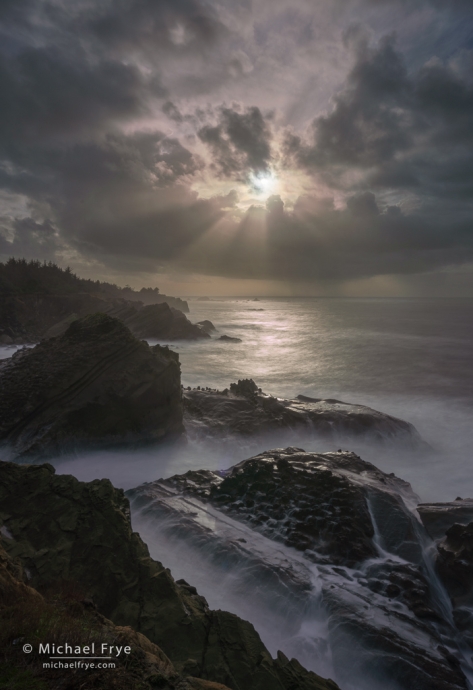
Sunbeams along a rocky coastline, Oregon Coast. 22mm, three exposures blended by hand in Photoshop (water at 15 seconds), f/16, ISO 100, ND filter.
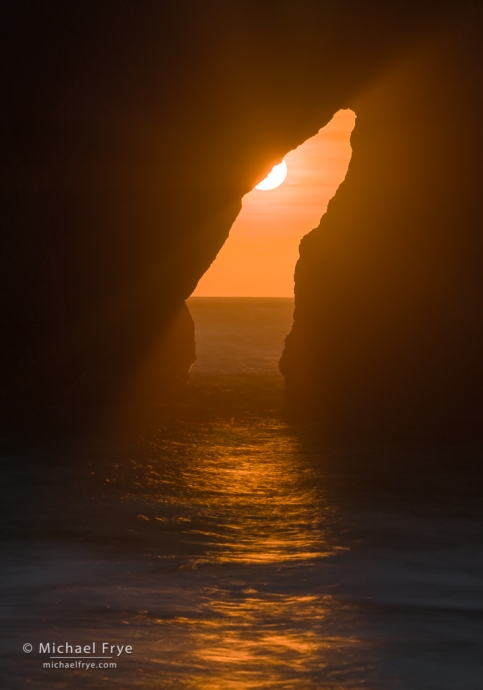
Sun setting through an arch, Oregon Coast. 232mm, three exposures ranging from 1/3 sec. to 6 seconds, blended with Lightroom’s HDR Merge, f/16, ISO 100, ND filter.
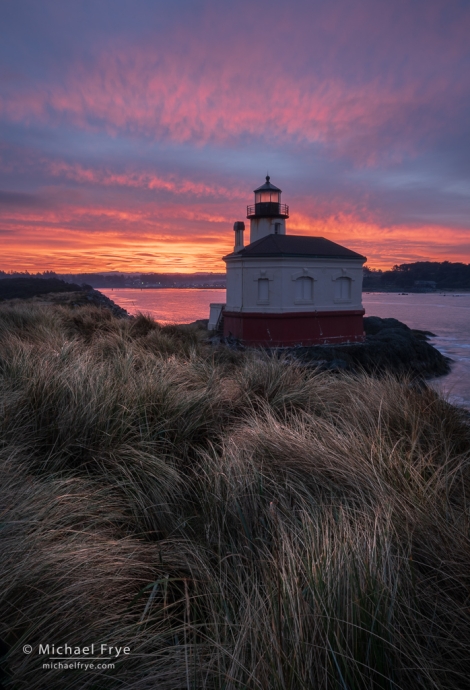
Lighthouse at sunrise, Oregon. 23mm, three exposure ranging from 1/10 sec. to 1.5 seconds, blended with Lightroom’s HDR Merge, f/16, ISO 100, no ND filter.
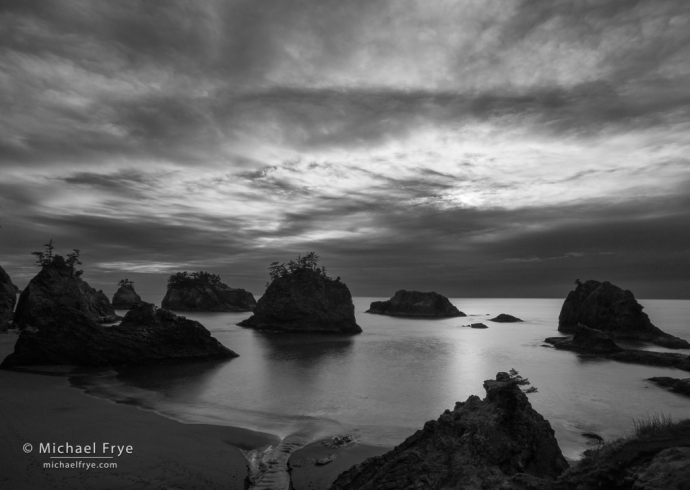
Clouds and sea stacks, Oregeon Coast. 18mm, three exposures blended by hand in Photoshop (water at 8 seconds), f/16 ISO 100, ND filter.
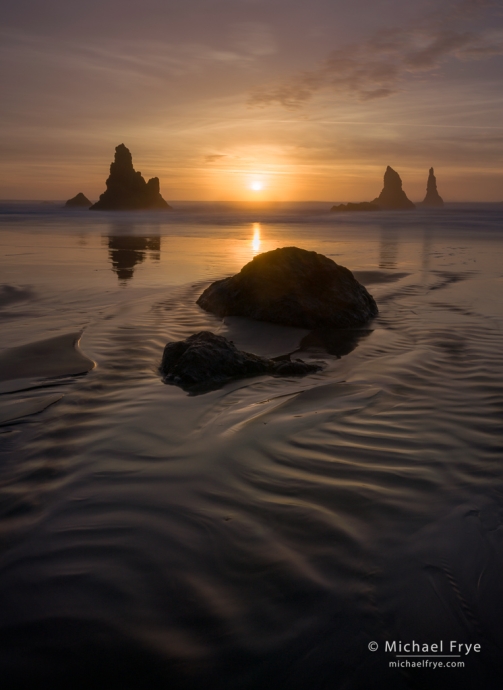
Rocks and setting sun, Oregon Coast. 28mm, three exposures blended by hand in Photoshop (water at 15 seconds), f/16, ISO 100, ND filter.
Related Posts: Olympic Medley; Oregon Moods
Michael Frye is a professional photographer specializing in landscapes and nature. He is the author or principal photographer of The Photographer’s Guide to Yosemite, Yosemite Meditations, Yosemite Meditations for Women, Yosemite Meditations for Adventurers, and Digital Landscape Photography: In the Footsteps of Ansel Adams and the Great Masters. He has also written three eBooks: Light & Land: Landscapes in the Digital Darkroom, Exposure for Outdoor Photography, and Landscapes in Lightroom: The Essential Step-by-Step Guide. Michael has written numerous magazine articles on the art and technique of photography, and his images have been published in over thirty countries around the world. Michael has lived either in or near Yosemite National Park since 1983, currently residing just outside the park in Mariposa, California.

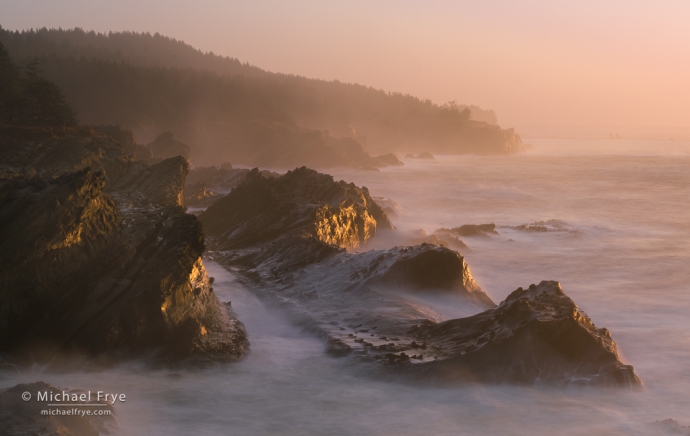
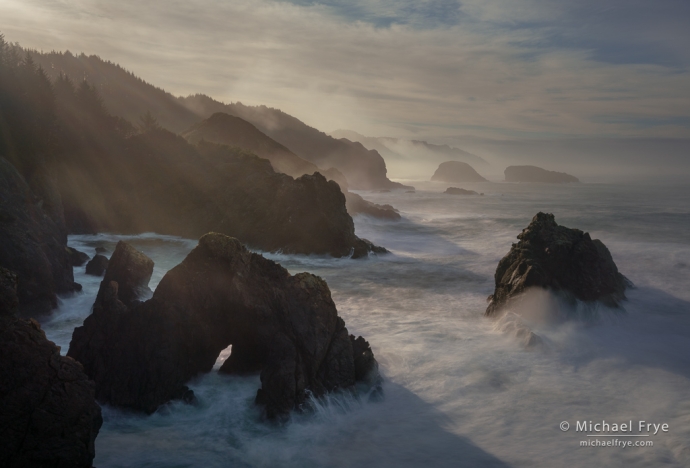
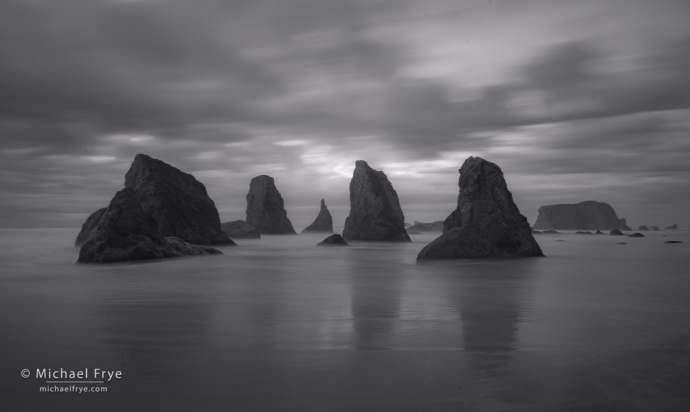
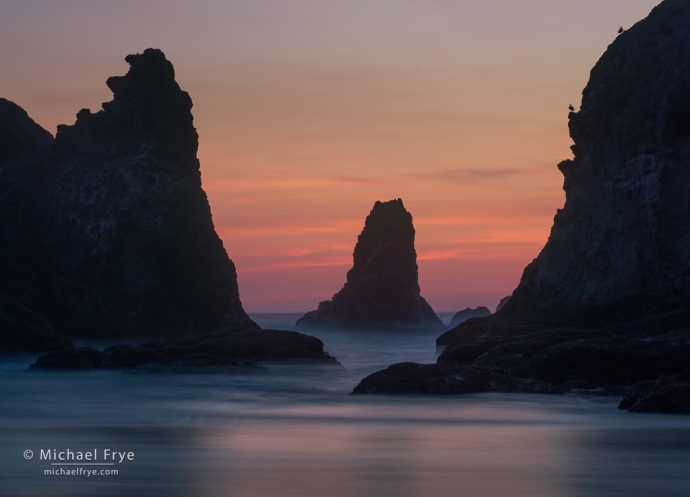
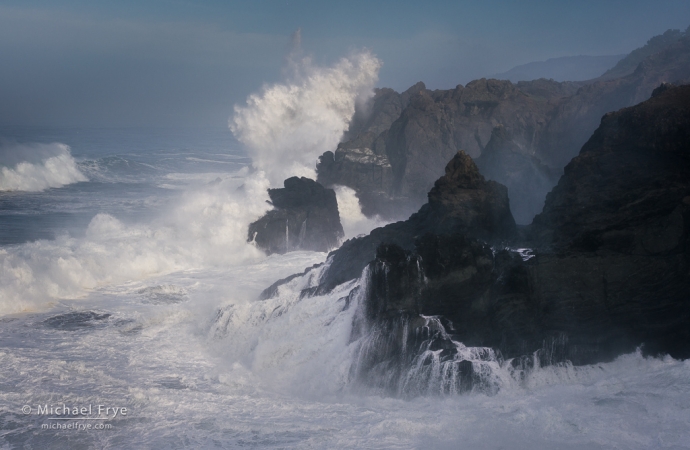
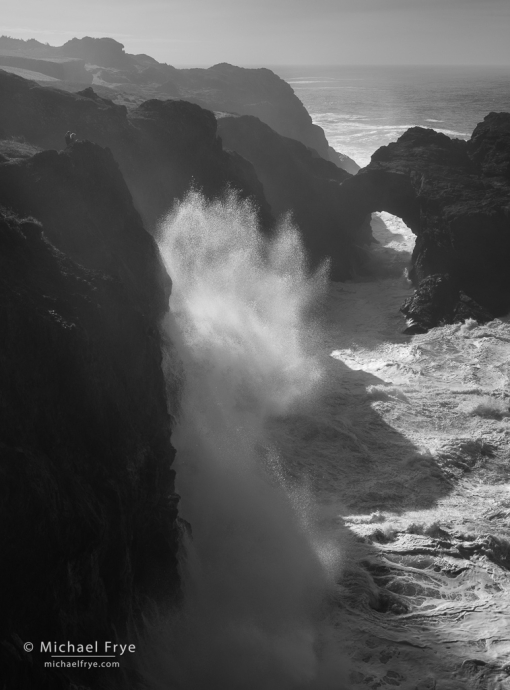
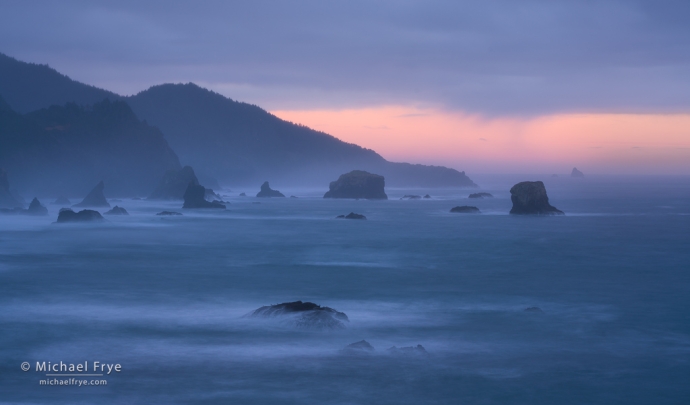








Thanks, Michael, for these lovely images and your comments about fast and slow shutter speeds when photographing the ocean. Much appreciated!
Happy Thanksgiving to you and Claudia!
Thanks Bob, and Happy Thanksgiving to you too!
I’m enjoying your coastal shots since I recently visited Vancouver Island and its shorelines. You mention in your captions that some HDR blends were done by hand in Photoshop. When do you decide to take this approach instead of using Lightroom’s HDR merge?
Thanks,
Kathy
Thanks Kathy! With slow shutter speeds Lightroom’s HDR Merge doesn’t work very well, as there’s too much movement between frames, so you’ll get ghosting or other weird transitions between frames. So a manual blend in Photoshop often works better.
These are awesome! I just got back from the Oregon coast and fell in love with it. I’m an amateur photographer and don’t know all the techniques you talked about. Wished I’d learned some of these before I went! Even so, the coast is so compelling that I still got some decent shots….and I want to go back again. You are indeed an inspiration. Thanks for sharing your images and your process.
Thanks Margery! Glad you enjoyed your time on the Oregon Coast.